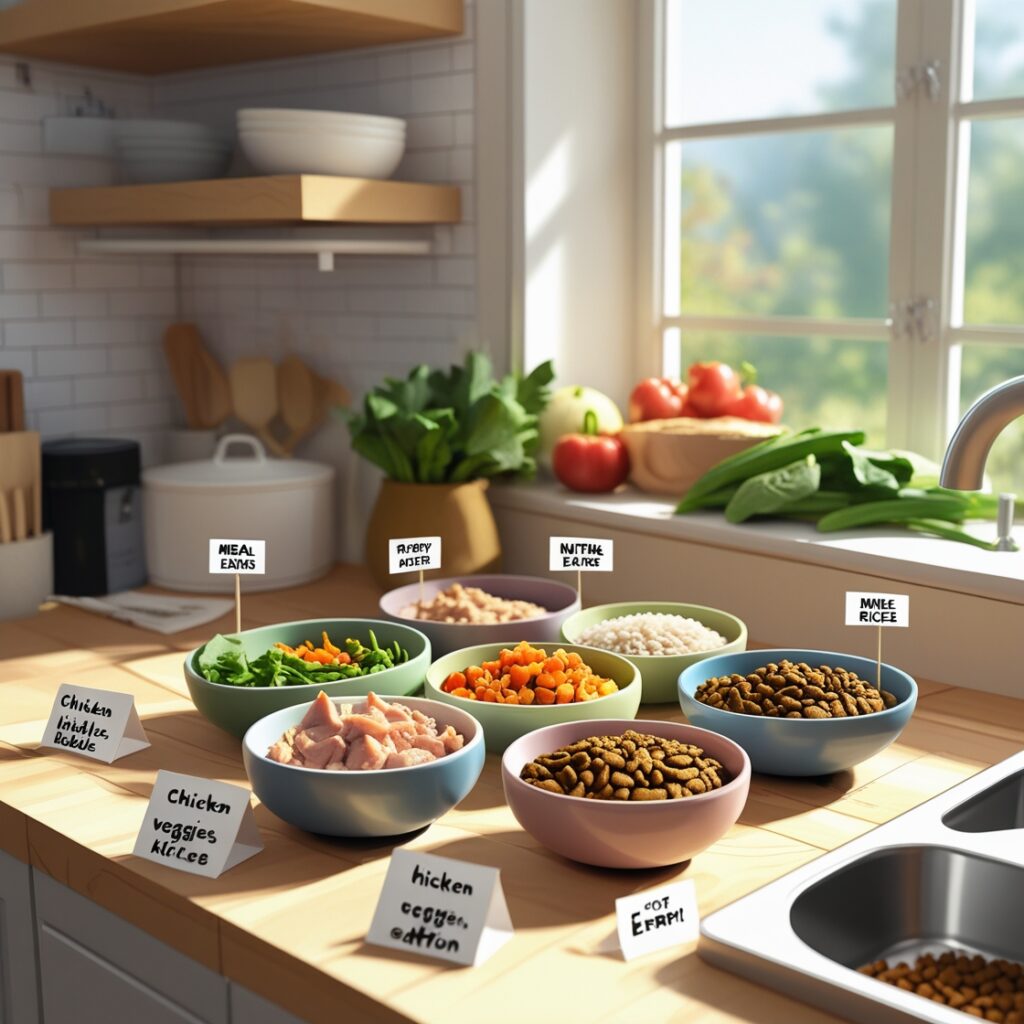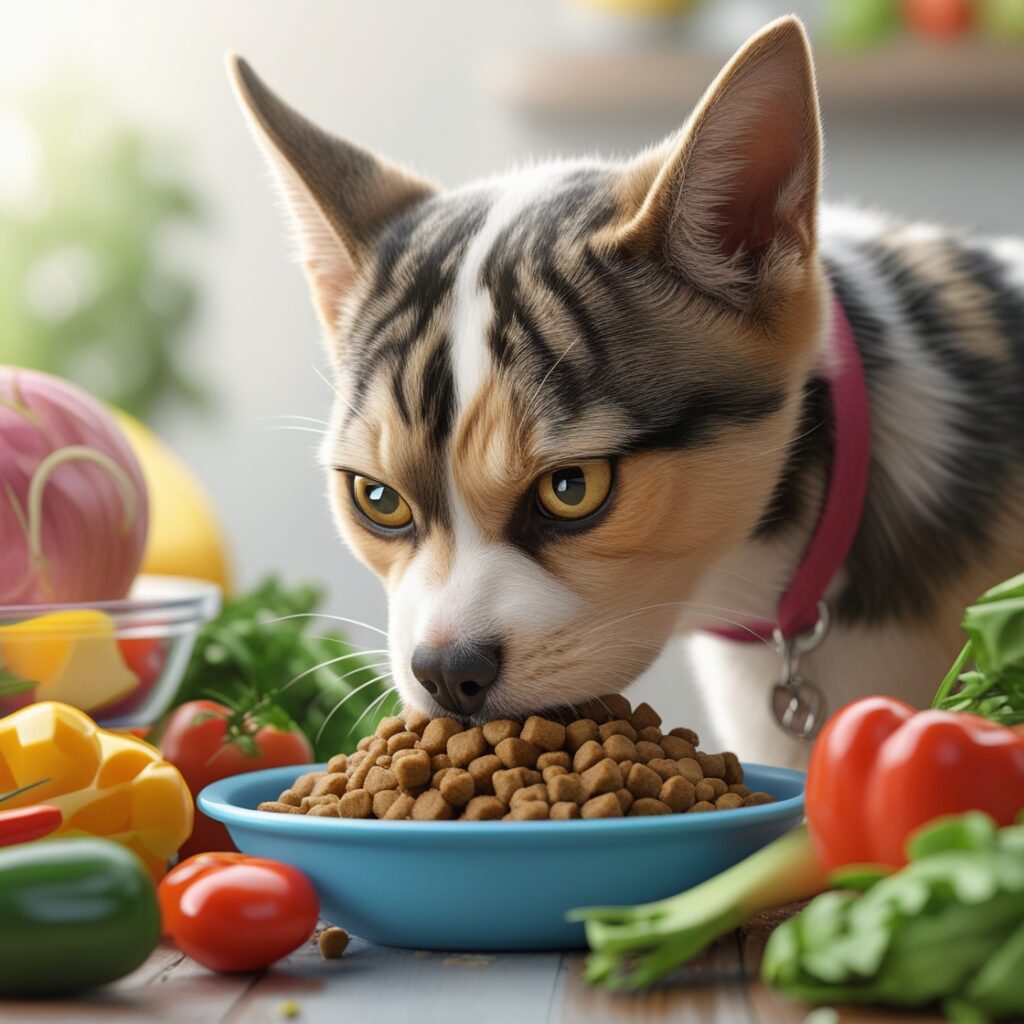Is your furry friend turning their nose up at mealtime? 🐱🐶 You’re not alone! Many pet owners face the challenge of picky eaters, turning feeding time into a battle of wills. But what if there was a way to make every meal a tail-wagging success?
Imagine the relief of watching your pet eagerly devour their food, knowing they’re getting all the nutrients they need. It’s not just about keeping them fed—it’s about ensuring their health, happiness, and longevity. The secret lies in understanding your pet’s preferences and crafting meal plans that cater to their unique tastes while meeting their nutritional requirements.

In this guide, we’ll unlock the mysteries of pet food preferences and explore effective strategies for feeding even the fussiest of eaters. From understanding specific dietary needs to balancing homemade and commercial options, we’ll cover everything you need to know to transform mealtime from a chore into a joyful experience for both you and your pet. Let’s dive in and discover how to create meal plans that will have your picky eater begging for more! 🍽️🐾
Understanding Pet Food Preferences
Common reasons for picky eating in pets
Pets can become picky eaters for various reasons, including:
- Medical issues
- Dietary changes
- Overfeeding treats
- Environmental factors
- Learned behavior
| Reason | Description |
|---|---|
| Medical issues | Dental problems, digestive issues, or underlying health conditions |
| Dietary changes | Sudden changes in food type or brand |
| Overfeeding treats | Reduced appetite for regular meals due to excessive treats |
| Environmental factors | Stress, anxiety, or changes in routine |
| Learned behavior | Reinforced pickiness through owner’s actions |
Identifying your pet’s likes and dislikes
To determine your pet’s preferences:
- Offer a variety of foods
- Observe their reactions
- Monitor eating habits
- Try different textures and flavors
- Pay attention to temperature preferences
The importance of balanced nutrition
Ensuring balanced nutrition is crucial for your pet’s health:
- Provides essential nutrients for growth and maintenance
- Supports immune system function
- Promotes healthy skin and coat
- Maintains optimal weight
- Prevents nutrient deficiencies
A balanced diet should include:
- Proteins
- Carbohydrates
- Fats
- Vitamins
- Minerals
Now that we understand pet food preferences and the importance of balanced nutrition, let’s explore how to craft appealing meal plans that cater to your pet’s tastes while meeting their nutritional needs.
Crafting Appealing Meal Plans
Introducing variety in textures and flavors
When crafting appealing meal plans for picky eaters, introducing a variety of textures and flavors is key. This approach not only keeps meals interesting but also helps expand your pet’s palate. Start by offering a mix of dry kibble and wet food, which provides different textures and moisture levels. You can also experiment with freeze-dried or dehydrated foods for a unique crunch.
Rotating protein sources
Rotating protein sources is an excellent way to ensure your pet receives a balanced diet while keeping their meals exciting. Consider the following protein rotation schedule:
| Week | Protein Source |
|---|---|
| 1 | Chicken |
| 2 | Fish |
| 3 | Beef |
| 4 | Turkey |
This rotation helps prevent food allergies and provides a diverse nutrient profile.
Incorporating pet-safe fruits and vegetables
Adding pet-safe fruits and vegetables to your pet’s meals can boost nutrition and appeal. Some safe options include:
- Carrots
- Blueberries
- Pumpkin
- Green beans
- Sweet potatoes
Always introduce new foods gradually and in small amounts to avoid digestive upset.
Using food toppers and mixers
Food toppers and mixers can transform a plain meal into a gourmet delight for your picky eater. Try these options:
- Bone broth
- Plain yogurt
- Cooked egg
- Fish oil
These additions not only enhance flavor but also provide extra nutrients. Remember to adjust portion sizes to maintain a balanced diet when using toppers.

Addressing Specific Dietary Needs
Catering to food allergies and sensitivities
When addressing specific dietary needs for pets with food allergies or sensitivities, it’s crucial to identify problematic ingredients and find suitable alternatives. Common allergens in pet food include:
- Beef
- Dairy
- Wheat
- Chicken
- Eggs
- Soy
To cater to these sensitivities, consider the following options:
- Limited ingredient diets
- Novel protein sources
- Hypoallergenic pet food formulas
| Allergen | Alternative |
|---|---|
| Beef | Duck or venison |
| Dairy | Goat’s milk or dairy-free options |
| Wheat | Rice or sweet potato |
| Chicken | Fish or rabbit |
Managing weight through portion control
Maintaining a healthy weight is essential for pets’ overall well-being. Implement these strategies for effective portion control:
- Use measuring cups for precise serving sizes
- Follow feeding guidelines based on weight and activity level
- Adjust portions based on your pet’s body condition score
- Incorporate low-calorie treats for rewards
Adapting meals for different life stages
As pets age, their nutritional needs change. Here’s how to adapt meals for various life stages:
- Puppies/Kittens: Higher protein and calorie content for growth
- Adult pets: Balanced nutrition for maintenance
- Senior pets: Lower calorie, higher fiber diets with joint support
| Life Stage | Key Nutritional Focus |
|---|---|
| Puppy/Kitten | High protein, DHA for brain development |
| Adult | Balanced nutrients, dental health support |
| Senior | Joint supplements, digestive enzymes |
Remember to consult with a veterinarian when making significant changes to your pet’s diet, especially when addressing specific health concerns or transitioning between life stages.
Effective Feeding Strategies
Establishing consistent meal times
Consistency is key when it comes to feeding picky eaters. By setting regular meal times, you can help establish a routine that your pet will come to expect and look forward to. Here’s a simple schedule to consider:
| Meal | Time |
|---|---|
| Breakfast | 7:00 AM |
| Lunch (optional) | 12:00 PM |
| Dinner | 6:00 PM |
Stick to these times as closely as possible, even on weekends. This regularity helps regulate your pet’s digestive system and can reduce anxiety around mealtimes.
Creating a positive eating environment
The atmosphere in which your pet eats can significantly impact their willingness to try new foods. Consider these tips:
- Choose a quiet, low-traffic area for feeding
- Use elevated bowls for larger dogs to reduce neck strain
- Opt for wide, shallow bowls for cats to prevent whisker fatigue
- Keep the feeding area clean and free from distractions
Gradually transitioning to new foods
When introducing new foods to picky eaters, a slow and steady approach is crucial. Follow this transition plan:
- Day 1-3: 75% old food, 25% new food
- Day 4-6: 50% old food, 50% new food
- Day 7-9: 25% old food, 75% new food
- Day 10+: 100% new food
This gradual transition helps prevent digestive upset and allows your pet to adjust to new flavors and textures.
Avoiding table scraps and excessive treats
While it’s tempting to share your meals with your pet, table scraps can reinforce picky eating habits. Instead, focus on nutritionally balanced pet foods and use treats sparingly. A good rule of thumb is to limit treats to no more than 10% of your pet’s daily caloric intake. This approach ensures that your pet receives proper nutrition without developing a preference for less healthy options.
Now that we’ve covered effective feeding strategies, let’s explore the pros and cons of homemade versus commercial pet food options.
Homemade vs. Commercial Pet Food
Benefits of preparing meals at home
Preparing meals at home for your picky eater pet offers several advantages:
- Control over ingredients: You can choose high-quality, fresh ingredients tailored to your pet’s preferences.
- Customization: Adjust portion sizes and ingredients based on your pet’s specific needs.
- Avoidance of allergens: Easily exclude ingredients that may cause allergic reactions.
- Bonding experience: Preparing meals can strengthen the bond between you and your pet.
| Benefit | Homemade | Commercial |
|---|---|---|
| Ingredient control | High | Limited |
| Customization | Easy | Difficult |
| Allergen avoidance | Simple | Challenging |
| Bonding opportunity | Yes | No |
Ensuring nutritional balance in homemade diets
While homemade meals offer benefits, ensuring proper nutrition is crucial:
- Research pet nutritional requirements
- Consult with a veterinarian or pet nutritionist
- Use a variety of ingredients to cover all nutritional bases
- Consider supplements to fill nutritional gaps
Selecting high-quality commercial alternatives
For those who prefer commercial options:
- Read ingredient labels carefully
- Choose foods with named protein sources (e.g., “chicken” instead of “meat by-products”)
- Avoid artificial preservatives and colors
- Look for foods tailored to your pet’s life stage and health needs
Consulting with a veterinary nutritionist
A professional can help:
- Develop a balanced homemade meal plan
- Identify potential nutritional deficiencies
- Recommend appropriate commercial foods
- Address specific health concerns through diet
Now that we’ve explored homemade and commercial options, let’s move on to overcoming common challenges in feeding picky eaters.
Overcoming Common Challenges
Dealing with sudden food refusal
When your pet unexpectedly refuses their usual meal, it can be concerning. Here are some strategies to address this issue:
- Rule out health issues
- Gradually reintroduce food
- Try different presentation methods
- Use positive reinforcement
| Approach | Description | Effectiveness |
|---|---|---|
| Wait it out | Skip one meal and offer food later | Moderate |
| Mix in treats | Add small amounts of favorite treats | High |
| Warm the food | Slightly heat the meal to enhance aroma | High |
| Hand-feeding | Offer food by hand to encourage eating | Moderate |
Managing mealtime anxiety
Some pets may experience stress during mealtimes. To create a calming environment:
- Establish a consistent feeding routine
- Choose a quiet, low-traffic area for meals
- Use puzzle feeders to make eating more engaging
- Consider separating pets during mealtimes if needed
Encouraging hydration for picky drinkers
Ensuring proper hydration is crucial for pet health. For pets reluctant to drink water:
- Provide fresh water daily
- Use water fountains to encourage drinking
- Add low-sodium broth to water for flavor
- Incorporate wet food into their diet
Addressing texture aversions
Some pets may dislike certain food textures. To overcome this:
- Experiment with different food consistencies (e.g., dry, wet, semi-moist)
- Gradually mix new textures with familiar ones
- Try different shapes and sizes of kibble
- Consider homemade options with controlled textures
Now that we’ve explored strategies for overcoming common challenges with picky eaters, let’s examine the pros and cons of homemade versus commercial pet food options.

Creating meal plans for picky eaters can transform feeding time from a struggle into a joyful experience for both pets and owners. By understanding your pet’s preferences, crafting appealing meals, and addressing specific dietary needs, you can ensure your furry friend receives proper nutrition while enjoying their food. Implementing effective feeding strategies and finding the right balance between homemade and commercial pet food options can further enhance your pet’s dining experience.
Remember, patience and persistence are key when dealing with picky eaters. Don’t be discouraged by initial challenges; instead, view them as opportunities to learn more about your pet’s unique tastes and needs. With dedication and the right approach, you can overcome common feeding hurdles and establish a healthy, satisfying mealtime routine that keeps your pet happy, healthy, and eagerly anticipating their next meal.



